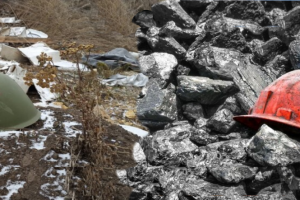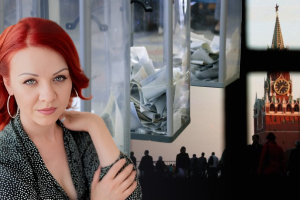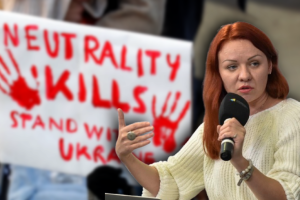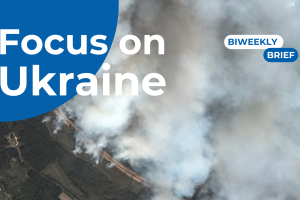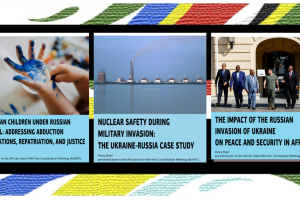International Developments
Ukrainian top general Valerij Zaluzhnyj met his U.S. counterpart, head of the Joint Chiefs of Staff general Milley in person on an undisclosed military base in the South-Eastern Poland. General Milley was touring German military installations and personally overseeing the training in using US weapon systems Ukrainian troops undergo in Germany. Rare personal meeting of the two generals had 2 main objectives: (1) to discuss the ongoing planning of Ukrainian counteroffensive, and (2) the coming Ramstein meeting expectations and how they fit into planning process.
The January, 20, 8th Ramstein session was expected to reveal the next major step in supporting Ukraine with modern weapon systems to ensure its victory over Russian invasion force in 2 major tracks: (1) amplifying the number of modern IFVs with heavy anti-tank capabilities, artillery and air defense systems sent to Ukraine, and (2) reaching collective organizational agreement on the sending Ukraine modern main battle tanks. While successful on the first track (doubling the previously announced numbers of Bradley and Marder IFVs) 8th Ramstein session has fallen behind on the second mainly due to the official Berlin position on the issue of sending/granting permission for the third countries to send the German-made Leopard 2 MBTs to Ukraine. However, the discussions revealed a firm coalition of European nations eager to provide Ukraine with the heavy armor despite the seeming German stalemate. This fact predictably opens up further discussions over sending Ukraine modern fighter jets such as F-16s and long-range artillery to ensure maximum efficiency of other ground weapon systems already in use on the battlefield.
Russia and Belarus launched the next phase of common military drill focusing on their air force capabilities, testing the interoperability of Russian and Belarus aviators and the early warning and air control systems. This drill is also aimed at testing the Ukrainian air defense capabilities at various levels, obviously in the anticipation of the expected large Russian offensive.
War/Security Situation
Russian defense minister S. Shoigu announced ambitious plan to reform Russian armed forces through 2023-2026 by increasing the total number of military servicemen up to 1,5 mln, revival the former Moscow and Leningrad military districts, establishing new army corpse and group forces on the Western and Northern directions. However ambitious, these plans appear to be far too out of reach for Russian military and political leadership in the current situation of battlefield stalemate and inside power struggle. It seems more likely these initiatives are aimed at masking the desperate need of manpower and weapons - the problems that Russian forces have to deal with to at least preserve their current battlefield posture.
Recommendations
1. The Zaluzhnyj - Milley personal meeting in the wake of 8th Ramstein session sent powerful message to other NATO allies to intensify their military aid efforts and seek the way to overcome political contradictions over sending Ukraine heavy armor and military jets.
2. Although the 8th Ramstein session has seemingly fallen behind in providing Ukraine with modern main battle tanks, it nevertheless became a turning point in amplifying the number of modern IFVs with heavy anti-tank capabilities, artillery and air defense systems sent to Ukraine, opening up discussions on providing long-range artillery and modern military aircraft - a fact that definitely needs further political and organizational attention from both Ukraine and its Western allies, so that next Ramstein meeting discussed these issues in the maximum practical terms.
3. Russian-Belarus air force military drill is another indication Kremlin is preparing its major offensive by not only testing the Ukrainian air defense capabilities but also by looking at the options of how Belarus could fit in the Gerasimov’s next hybrid move against Ukraine. Obviously this is a scenario for which Ukrainian Armed Forces and the Western allies are to be fully prepared by ensuring Ukraine’s got everything it needs to repel the next Russian major offensive.
4. Russian defense minister S. Shoigu’s ambitious plan to reform Russian armed forces through 2023-2026 is a tool Russian regime desperately needs to continue its mobilization on a much bigger scale, minimizing the risk of domestic political and social unrest and revealing the more and more pressing problems of Russian military machine facing the war it’s unable to wage.
Photo: Ukrainian Defense Minister Oleksii Reznikov (R), United States Defense Secretary Lloyd Austin (C) and US Chief of Staff Gen. Mark Milley (L) attend the Ukraine Defense Contact Group meeting at the Ramstein Air Base in Rhineland-Palatinate, southwestern Germany on Jan. 20, 2023. (Photo by Arif Akdogan/Anadolu Agency via Getty Images).
__________________________
This policy brief was prepared as part of a project “Russia-Ukraine Conflict: from Full-Scale War to Conflict Resolution and Post-War Reconstruction” implemented in cooperation with the Razumkov Centre with the support of the MATRA program of the Embassy of the Netherlands. The opinions expressed are those of the author(s) only and should not be considered as representative of the Embassy’s official position.




